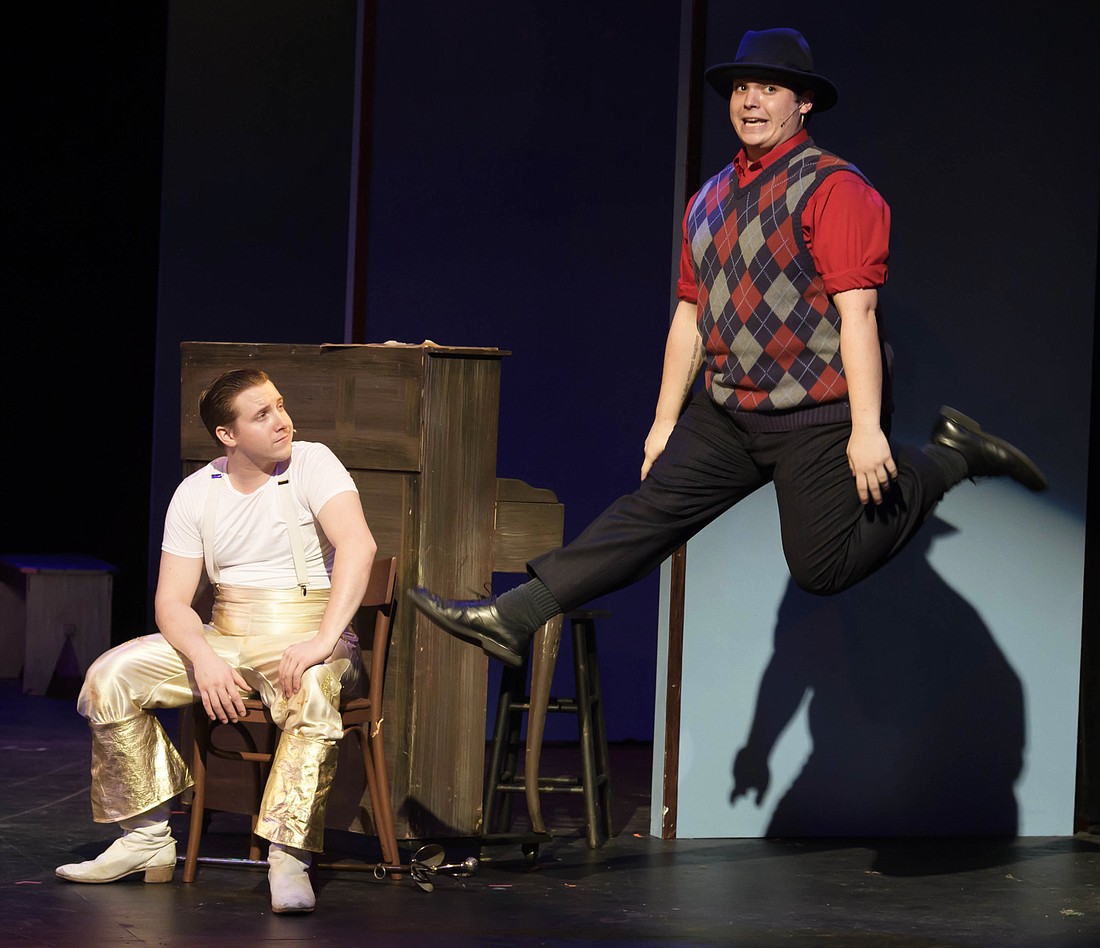- December 23, 2024
-
-
Loading

Loading

Brian F. Finnerty started dancing at age 3 and never stopped.
After studying musical theater at Booker High School’s VPA program and winning a host of teen dance competitions, he attended Point Park University’s Conservatory of Performing Arts in Pittsburgh, Pa.
Today, the hardworking Finnerty choreographs for Plump Sisters Productions, Big Red Nose Burlesque, Random Acts and The Players Centre for Performing Arts. He’s also a singing and dancing actor — and a familiar face on the local stages of West Coast Black Theatre Troupe, Big Red Nose Burlesque (as his “Average Joe” character) and The Players—where he’s now performing in “Singin’ in the Rain”— on top of choreographing the show’s complicated dance routines.
Finnerty will also choreograph The Players’ upcoming production of “Funny Girl.” With all those responsibilities, you wouldn’t think he’d have time for an interview. But he did.
I’ve met some of my favorite people at The Players! I also have the honor of teaching tap and coordinating the competition team with my castmate, Logan Junkins (Don Lockwood).
That’s always a challenge — even more so with a large, taxing dance show like “Singin’ in the Rain.” I didn’t really get to focus on my Cosmo character until final previews because I devoted most of my rehearsal time to choreography. Because of the show’s many long, difficult routines, I often got together with Logan (Don) and Jessie (Kathy), on our days off from “normal people” jobs to refine dances like “Moses Supposes” and “Good Morning.” The cast also did a tremendous job of cleaning their numbers when I wasn’t available. I couldn’t have done it alone.
When I was just starting to walk, I’d put on my dad’s work boots and my mom’s sunglasses and stand on a large Tonka truck they’d got me for Christmas. It was my stage. I was always putting on a show, whether a solo act in our living room or gathering the neighborhood kids to be in a play I “wrote.” I tried baseball, karate, and some other sports, but my parents had a feeling that dance was the place for me. They enrolled me in dance classes — and I never left.
Thank you! This is an interesting question. I’ve never really thought about it before. I’ve always looked up to the greats of physical comedy and tried to mimic their styles. I assume dance and technique helps with that. Honestly, growing up, I was never a fabulous dancer. I lacked flexibility and technique. It wasn’t until I was 16 where I started to come into my body as a dancer. Until then, I was an entertainer. That’s what kept me in the dancing biz — not my actual dancing. I had to rely on “funny faces” and being “the cute chunky kid.” I’m not complaining; it worked. Eventually, I found my joys and strengths in dance.
I sometimes stop at Taco Bell on the way home after shows. Sometimes the drive thru is closed and I have to get out of my car and walk all the way into the restaurant.
I wanted to pay homage to the original without simply stealing Gene Kelly’s choreography and imposing it on dancers who aren’t at the level of Kelly and O’Connor. (Then again, who is?) I created original choreography for all the dance numbers in our production but kept the classic audience pleasers — the couch flip in “Good Morning,” the lamppost in “Singin’ in the Rain,” and the dance with the stuffed dummy in “Make ‘Em Laugh,” etc. I know if I’d been in the audience and didn’t see these iconic routines, I’d be highly disappointed. To deliver the best experience possible, some respectful tribute to the original was necessary.
I’m no stranger to the material — I watched the movie religiously all my life. I’m also a big fan of the 1920s dance style. For some group numbers like “All I Do” and “Beautiful Girl,” I tried to plan the choreography ahead of time. For intimate numbers like “Fit as a Fiddle” and “Moses,” I came up with the steps on the spot. Logan (Don Lockwood) is a quick learner, and we’ve tapped together on numerous occasions. Working out the numbers together during rehearsal was the best way to go.
I’ve always looked up to Nathan Lane, Jack Black and Gene Kelly. I love Nathan Lane’s timing and presence, Jack Black’s vocals and comedy, and Gene Kelly’s confidence and grace. Carol Burnett and Laurie Metcalf are also huge inspirations. They’re two of the most brilliant comediennes to ever live.
Use the restroom before the show so you won’t have to get up before intermission. And turn off your phone — it’ll be there after the show. Take two hours of your week to step into another world. We can all use a break from reality — especially in this day and age.
Two dance classes a week doesn’t cut it. Be at that studio every night after school. And take ballet. Take a lot of ballet!